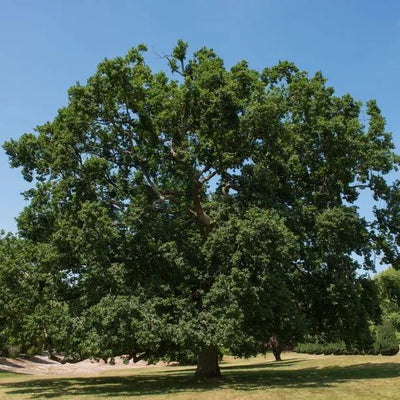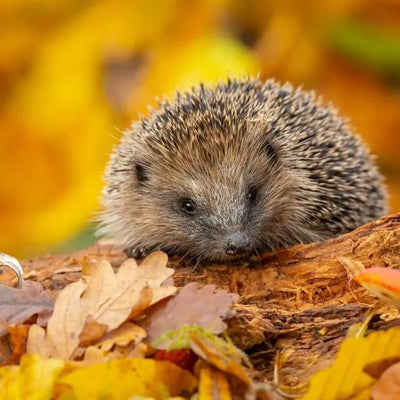Buying Large Native Trees Online:
Pre-Order Bareroot Native Trees For 2025/26 Winter Planting Season
Britain's native trees are all European, with no significant examples of endemic, that is British-only natives. Most tree species arrived at the end of the previous Ice Age, and some were spread in the Roman and Medieval periods. The most truly native tree is Yew, Taxus baccata, which is only sold in smaller sizes up to 150cm tall.
What size Native trees should I buy?
- If you are not in a hurry to get a full sized Native tree, we recommend starting with the smaller 6/8cm girth size.
- If you are in a hurry and need instant impact, then go for the 8/10cm girth size.
Standard trees are measured by their girth 1 metre above the ground, and young saplings are measured by height.
Therefore, a 6/8cm Standard tree is much bigger than an 60/80cm sapling tree. If a tree is available in both sizes, it will be noted in the product descriptions.
Most of the trees in this section are also sold in smaller sapling sizes in the native hedging section.
Browse our full range of Garden Trees.
- When your order is ready: your mail order trees are delivered by next working day courier (not the next working day after ordering!)
- Friendly support: if there is anything wrong with your plants when you inspect them, Contact Us within 5 working days
All bareroot plants are covered by our Refund Guarantee, so you can give them a whirl with complete confidence.
From stately birch trees to grand field maples, native trees are the most reliable, easy to grow, and wildlife-friendly.
Where Can I Grow Native Trees?
Native British trees are hardy, tough, and generally suitable for most gardens and locations.
You will need to read each plant's description for more detailed information, but here are some general ideas for difficult locations:
Native Trees that Thrive in Wet Locations:
Alder, Willow, Poplar, Hazel, Dogwood (which is more of a large shrub than a tree).
Native Trees that Thrive in full Shade:
Yew, Holly, Elderflower, Box.
Native Trees that Thrive on the Coast:
This pre-filtered list has some of the best suggestions.
When and How do I plant Native Trees?
You can plant Pot Grown Native trees at any time of year, and Bareroot trees during winter, except when the soil is frozen.
The best time to plant Native trees is from late Autumn to early Spring (November to March), using bareroot stock, which is cheaper, easier to carry and plant, and tends to establish even better than their pot grown equivalents.
Watch our Tree Planting Video for instructions.
Although optional, we strongly recommend using Rootgrow.
Aftercare:
Remember: the two biggest killers of recently transplanted trees are underwatering, and being choked by weeds and grass.
- Regular, thorough watering is vital during dry weather in their first spring and summer, and highly recommended the following summer, especially if there is a heat wave.
- Either remove weeds and grass by hand periodically, or use some form of mulch to suppress them.
Tree Planting Accessories
Standards that are 6/8cm in girth and upwards are quite big trees, so they need a tree planting stake and a tree tie (with a buffer between the tree and the stake) during their first couple of years.
A mulch mat is will suppress weeds & grass, and preserve moisture: remember that dry soil and competition with weeds are the two biggest killers of new trees.
Even with a mat, you should remove anything that manages to grow up between the mat and the trunk in late spring and summer.
You can buy those items separately, or save money with our Tree Planting Pack.
You definitely need a tree guard if there are deer or rabbits about.
In urban areas with no wild animals, tree guards are great for protecting against mowers and strimmers.For that purpose, you can cut one tree guard into several pieces about 20-25cm long, to act as skirting around the base of the tree.
Mycorrhizal Fungi
We cannot recommend using Rootgrow fungi enough: it makes a huge difference, especially with larger trees, which are scrambling to regrow the root systems that they lost when we dug them up, in order to support their now top-heavy growth above ground.
Mycorrhizal fungi assist the roots in accessing soil nutrients and water, and protect the roots from soil critters.
In return, the tree shares sugar with them, and the result can be over 50% more growth above ground!
Are Cultivars of Native Trees Still Native?
Officially no, a cultivar (cultivated-variety) of a native tree, a "nativar" is no longer native anywhere.
For example, Acer campestre is the UK's native field maple.
But its cultivar Acer campestre 'Streetwise' is not considered native by official sources such as the Royal Horticultural Society and Countryside Stewardship Schemes.
While it is probable that a given nativar is as good for native wildlife as its parent species, it is quite possible that it isn't, especially in the case of cultivars with double flowers, which tend to be useless for pollinating insects because they have no nectar, and their pollen may be inaccessible.

 Secure, One-Tap Checkout
Secure, One-Tap Checkout
 Hand Picked, Delivered to Your Door!
Hand Picked, Delivered to Your Door! 1 Year Bareroot Guarantee
1 Year Bareroot Guarantee







































